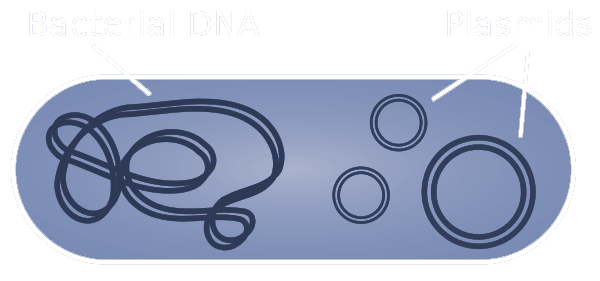
11 Oct What is Plasmid DNA?
A plasmid is a small circular DNA molecule found in bacteria and some other microscopic organisms. Plasmids are physically separate from chromosomal DNA and replicate independently. They typically have a small number of genes — notably, some associated with antibiotic resistance — and can be passed from one cell to another. Scientists use recombinant DNA methods to splice genes that they want to study into a plasmid. When the plasmid copies itself, it also makes copies of the inserted gene.

Plasmids are considered replicons, units of DNA capable of replicating autonomously within a suitable host. However, plasmids, like viruses, are not generally classified as life.[6] Plasmids are transmitted from one bacterium to another (even of another species) mostly through conjugation.[7] This host-to-host transfer of genetic material is one mechanism of horizontal gene transfer, and plasmids are considered part of the mobilome. Unlike viruses, which encase their genetic material in a protective protein coat called a capsid, plasmids are “naked” DNA and do not encode genes necessary to encase the genetic material for transfer to a new host; however, some classes of plasmids encode the conjugative “sex” pilus necessary for their own transfer. Plasmids vary in size from 1 to over 400 kbp,[8] and the number of identical plasmids in a single cell can range anywhere from one to thousands under some circumstances.

